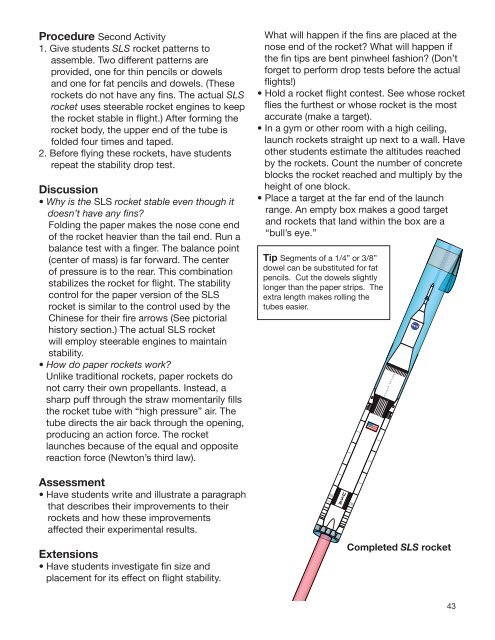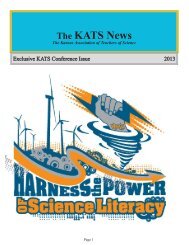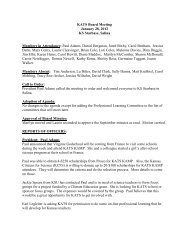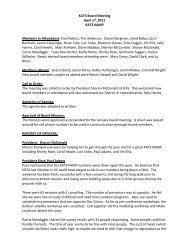You also want an ePaper? Increase the reach of your titles
YUMPU automatically turns print PDFs into web optimized ePapers that Google loves.
Procedure Second Activity<br />
1. Give students SLS <strong>rocket</strong> patterns to<br />
assemble. Two different patterns are<br />
provided, one for thin pencils or dowels<br />
and one for fat pencils and dowels. (These<br />
<strong>rocket</strong>s do not have any fins. The actual SLS<br />
<strong>rocket</strong> uses steerable <strong>rocket</strong> engines to keep<br />
the <strong>rocket</strong> stable in flight.) After forming the<br />
<strong>rocket</strong> body, the upper end of the tube is<br />
folded four times and taped.<br />
2. Before flying these <strong>rocket</strong>s, have students<br />
repeat the stability drop test.<br />
Discussion<br />
• Why is the SLS <strong>rocket</strong> stable even though it<br />
doesn’t have any fins?<br />
Folding the paper makes the nose cone end<br />
of the <strong>rocket</strong> heavier than the tail end. Run a<br />
balance test with a finger. The balance point<br />
(center of mass) is far forward. The center<br />
of pressure is to the rear. This combination<br />
stabilizes the <strong>rocket</strong> for flight. The stability<br />
control for the paper version of the SLS<br />
<strong>rocket</strong> is similar to the control used by the<br />
Chinese for their fire arrows (See pictorial<br />
history section.) The actual SLS <strong>rocket</strong><br />
will employ steerable engines to maintain<br />
stability.<br />
• How do paper <strong>rocket</strong>s work?<br />
Unlike traditional <strong>rocket</strong>s, paper <strong>rocket</strong>s do<br />
not carry their own propellants. Instead, a<br />
sharp puff through the straw momentarily fills<br />
the <strong>rocket</strong> tube with “high pressure” air. The<br />
tube directs the air back through the opening,<br />
producing an action force. The <strong>rocket</strong><br />
launches because of the equal and opposite<br />
reaction force (Newton’s third law).<br />
Assessment<br />
• Have students write and illustrate a paragraph<br />
that describes their improvements to their<br />
<strong>rocket</strong>s and how these improvements<br />
affected their experimental results.<br />
Extensions<br />
• Have students investigate fin size and<br />
placement for its effect on flight stability.<br />
What will happen if the fins are placed at the<br />
nose end of the <strong>rocket</strong>? What will happen if<br />
the fin tips are bent pinwheel fashion? (Don’t<br />
forget to perform drop tests before the actual<br />
flights!)<br />
• Hold a <strong>rocket</strong> flight contest. See whose <strong>rocket</strong><br />
flies the furthest or whose <strong>rocket</strong> is the most<br />
accurate (make a target).<br />
• In a gym or other room with a high ceiling,<br />
launch <strong>rocket</strong>s straight up next to a wall. Have<br />
other students estimate the altitudes reached<br />
by the <strong>rocket</strong>s. Count the number of concrete<br />
blocks the <strong>rocket</strong> reached and multiply by the<br />
height of one block.<br />
• Place a target at the far end of the launch<br />
range. An empty box makes a good target<br />
and <strong>rocket</strong>s that land within the box are a<br />
“bull’s eye.”<br />
Tip Segments of a 1/4” or 3/8”<br />
dowel can be substituted for fat<br />
pencils. Cut the dowels slightly<br />
longer than the paper strips. The<br />
extra length makes rolling the<br />
tubes easier.<br />
Completed SLS <strong>rocket</strong><br />
43










